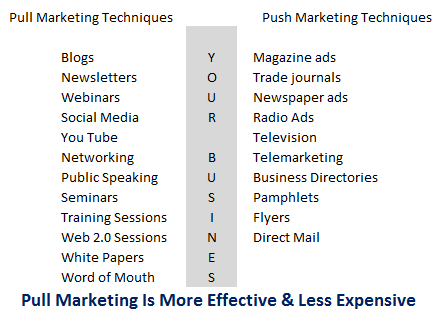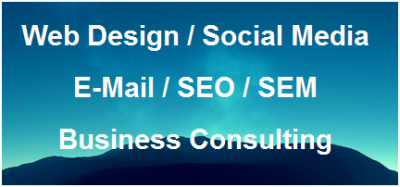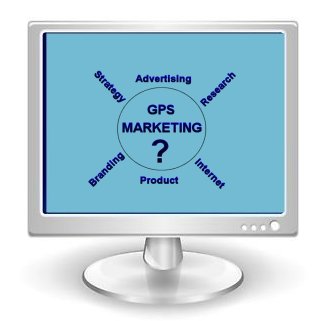
Your Trusted Internet Resource
G P S MARKETING - 3
July 2014
---------------------------------
This is the Third in a series of the 7 basic fundamental marketing principals that every small business needs to embrace.
Last month we discussed a little about push marketing and how it can adversely affect your message by actually turning off the reception to your marketing process. With that thought in mind you might ask, What is the small business person to do? That brings us to the third principal which is Intensify Pull Marketing Techniques to overcome the problems associated with push marketing.
The terms push and pull marketing were originally used as a descriptive in supply chain management.

The “push—pull” system describes the movement of a product or information between two subjects. In markets the consumers usually “pull” the goods or information they demand for their needs, while the suppliers "push" them toward the consumers. Today technology allows the consumer to tune out the push and pull in only that which he or she feels is appropriate for their particular needs.
A perfect example of this is the use of the DVR. Some users record their favorite programs and then speed through the commercials to view the next scene of the program. This then puts the viewer in control of what is watched and it is important to note that the money spent on the push or advertisement was totally wasted in that particular setting.
Pull marketing on the other hand puts the customer in the driver's seat and helps you get found at the very moment that the customer needs your product or service. It allows you to build trust by providing customer with information they value to attract them to your website to do business. Examples of pull marketing include content marketing Search Engine Optimization, pay per click and social media marketing. Not only do these attract more leads and sales than push marketing, they are also less expensive. Research shows the pull marketing processes cost 62% less than push marketing tactics.
Pull marketing is an approach designed to draw customers to a brand through non-intrusive methods. The ultimate goal is to strengthen consumer awareness of a brand and products and foster demand. Examples of pull marketing include Product Placement, Social Media Marketing, Corporate Sponsorship, Content Marketing and Native Advertising.
Product Placement is the inclusion of a brand in media, usually without explicit reference to the product. These are most often featured in movies or television shows. The beverage and auto industry are the leading proponents of product placement.
Social Media Marketing or SMM, uses social networking websites such as Facebook, LinkedIn and Twitter as a marketing tool. The goal is to provide useful content users can share with their network to help increase brand exposure.
Corporate Sponsorship is a form of advertising where companies pay to be associated with certain events such as a sporting event. When the sponsorship of a nonprofit or charitable event is involved, the sponsorship activity is often referred to as event marketing or cause marketing.
Content Marketing is the publication of material designed to promote a brand, usually through a more subtle approach than that of traditional push advertising. The essence of good content marketing is that it offers something the viewer wants, such as information or entertainment. Content Marketing can take a lot of different forms, such as YouTube videos, blog posts, articles and Facebook posts. The process will not seem like marketing and should only be identifiable as marketing because the advertiser is identified as the content provider.
Native Advertising on the other hand is content integrated within a website or service in such a way that it doesn't stand out from other material presented there in terms of content, format, style or placement. Photo sharing platforms such as Facebook, Instagram and Pinterest are good examples of native advertising. A study has shown that the retention rate for visual information can reach 65% in comparison to 10% for text-based information, thus making these platforms the ideal location for native ads.
Pull marketing then is the art of attracting leads and sales rather than applying the more dollar intensive traditional push marketing approaches. In an increasingly tough marketplace, pull marketing is overtaking push marketing as the most effective way to drive business.
The social media revolution shows us that buyer behavior has changed forever. Recently Google said there are 88 billion searches a month on their site alone. Half of those are searches for specific information on products or services and another 20 percent are for local businesses. It is impearitive that, as a small business, you position yourself where your potential customers are. Review the graphic above and look at where you can interject your business into the marketplace. Need more information? Send a note and be sure to check in next month for the next phase of GPS Marketing.
Need New Customers?
mfchase.com
503 808-0021

All of our websites are custom hand coded sites to insure maximum load speed and flexibility.
What Is Marketing?
Marketing is the process of communicating the value of a product or service to customers. The objective of marketing is attracting new and repeat customers.The final stage of marketing is the sale.
Marketing can take many forms and has indeed done so over the years. With the advent of new technology, the marketing landscape has changed considerably and the customer has new expectations.The concepts of push Marketing are loosing ground and pull marketing is becoming the new norm.

Businesses, especially the small business needs to review what they are doing to keep the phone ringing and the doors swinging. SEO, while still important, is taking a back seat to content marketing which we will explore in session 4. We will look at the mobile revolution in session 5 and see how it fits in. Still to come in sessions 6 and 7 will be branding and metric measurements.
Each of these is spread out over a period to allow you to incorporate each into your marketing plan if you wish to do so. You may be doing some of them now and that is great! Keep it up and you will stay in front of your competitors. If you are not using these tools, I urge you to give it some consideration. Ask for a free consultation. It only takes 30 minutes and can be scheduled at your convenience.
Larry writes in, "I have been using pull marketing on Facebook for over two months and I do not see any results. Why is it so slow?"
Larry, Please look at the analytics for your website first. Two areas to view are the bounce rate and behavior patterns. Facebook users are casual so fan pages perform best. What page are you sending them to from Facebook? Is that showing?
In addition if Facebook is the only channel you are using you might want to consider some other formats such as LinkedIn, Twitter and others.
My caution is do not just jump in, have a strategy. Make a plan and work the plan, develop your process with metrics in mind. If you can measure it, you can change it. If you want to discuss it further, a free consultation is available just contact me with another note or call.